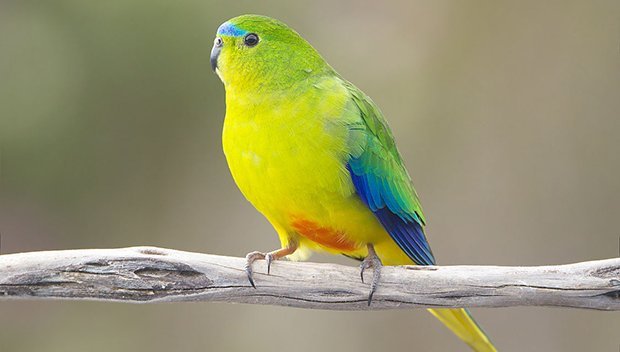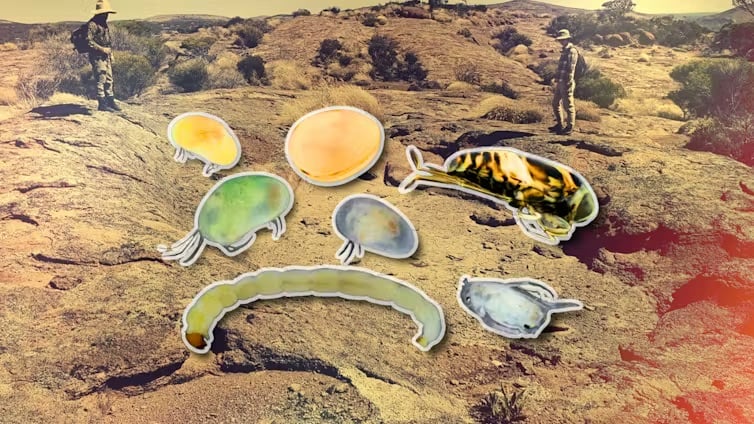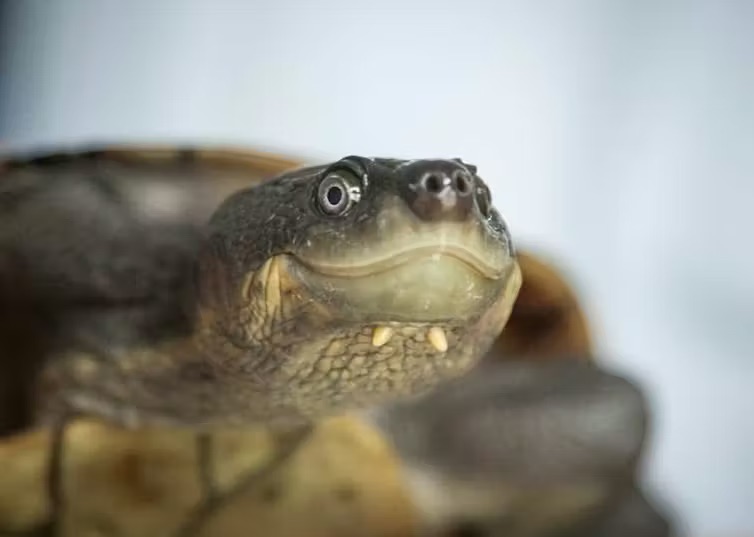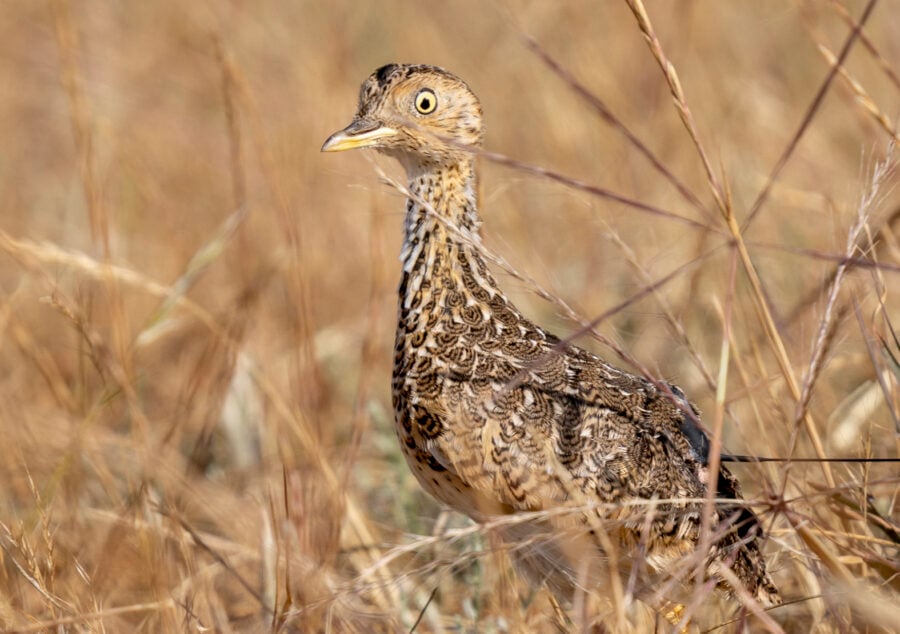Australia’s most endangered species

HOME TO SOME OF the most extravagant, eccentric and dangerous animals, Australia also has some of the most endangered wildlife in the world.
Our unique marsupials and monotremes are a source of pride, but Australia also has the dubious honour of the highest extinction rate of any nation.
“Importantly, research clearly shows that biodiversity contributes significantly to our survival, well-being and enjoyment of life, so when we lose species at the rates that we’re currently witnessing, we should be gravely concerned,” says Dr Euan Ritchie an ecologist at Deakin University in Melbourne.
Built on a fragile balance of predators and prey, Australia’s various ecosystems are highly susceptible to change. When human intervention consistently alters an ecosystem, this balance can be upset, seriously threatening the biodiversity.
Loss of a species’ role is the biggest concern
While all species are important to an ecosystem, ‘keystone’ species are particularly vital. These are often top predators such as crocodiles, because of the role they play in controlling prey. The southern cassowary, however, is also a keystone species as it spreads the seeds of as many as 238 species of plants in northern Queensland.
“Losing any one species is a tragedy, but what is even more concerning is the loss of a species’ ecological role following its extinction,” says Euan. “If we were to lose dingoes, as an example, we also lose their ability to control pest species such as foxes and cats, and overabundant herbivores, [like] pigs, goats and kangaroos, which has widespread and often negative impacts across the whole system.”
“Without a doubt, land clearing and the combined effects of habitat loss and fragmentation with other stressors such as climate change and invasive species is the largest threat to biodiversity,” adds Dr Jonathan Webb, an environmental scientist at the University of Technology Sydney.
Some of Australia’s most critically endangered species
1. Southern corroboree frog – Pseudophryne corroboree
IUCN listing: Critically Endangered
Inhabiting a small corridor on the New South Wales and Victorian border, the tiny southern corroboree frog – which is the size of a fingernail – is running on the edge of extinction. Fewer than 150 breeding males are thought to survive across 23 sites that were surveyed in 2001. The main suspected threat is the chytrid fungi. Although many studies have been undertaken, the success has been limited, as they have not been able to confirm the critical threat to the frogs. A studying conducted between 1997 and 1999 revealed that the frogs were present in 213 sites around the NSW and Victorian border but this number dropped only 79 sites as of 2001, revealing how quickly these animals were disappearing. A captive-breeding program, led by Sydney’s Taronga Zoo, reintroduced 800 eggs into Kosciuszko National Park in 2012.
2. Margaret River burrowing crayfish – Engaewa pseudoreducta
IUCN listing: Critically Endangered
With only two known populations, the Margaret River burrowing crayfish is highly endangered. Even one of these may no longer exist, as there have been no sightings since 1985. The threats are almost all attributed to human activity. Land clearing is the biggest danger, as crayfish habitat can be eroded or contaminated by farming, mining and urban development. Feral pigs also damage habitat. No current population information exists but it is estimated that numbers are very low because of the restricted range of the species.
3. Lord Howe Island phasmid – Dryococelus australis
IUCN listing: Critically Endangered
Once plentiful on Lord Howe Island, the phasmid came under serious threat in 1918 when black rats were introduced. They are now only found in the wild on Balls Pyramid, a rocky outcrop off the coast of the main island. In addition to the threat posed by rodents, the land lobster’s food source is also threatened. Morning glory, an invasive plant, competes with the land lobster’s only known source of food, the Melaleuca howeana. Plans to control these threats and introduce the species back to the mainland are projected to start in the next three years. A program at Melbourne Zoo has bred more than 9,000 of the insects in captivity, some of which have been returned to the wild.
4. Bornemissza’s stag beetle – Hoplogonus bornemisszai
EPBC listing: critically endangered
Playing a key role in decomposing organic material, Bornemissza’s stag beetle is located in a highly specific area in north-eastern Tasmania. Growing to between 1.5 and 2.5cm long, these beetles are thought to numbers from several hundred to several thousand. Their larvae incubate underground and upon hatching, come to the surface and feeds with adults on the decaying organic material in the Tasmanian bushland. The beetle’s diet is the prime threat to existence: they require a thick layer of decomposing leaf matter. With the expansion of farmland and clear-cutting of Tasmanian forests, the beetle is under serious threat.
5. Derwent River sea star – Marginaster littoralis
EPBC listing: critically endangered
Isolated to the chilly waters of the Derwent River estuary near Hobart, Tasmania, this sea star has been reduced to five known populations. While research on the sea star is sparse and the exact population size is not known, it has been reduced to very low levels and may already been wiped out. The greatest threat has been the introduction of the New Zealand sea star. At the beginning of the 20th century, oysters were shucked in the estuary and animals that were previously confined to New Zealand waters were introduced to Tasmania. No recovery plan for this species has been drafted as research on them is too sparse.
6. Southern bent-wing bat – Miniopterus schreibersii bassanii
EPBC listing: critically endangered
The southern bent-wing bat hides in caves between Victoria and South Australia during the daylight hours and hunts after dark. The bat has been in decline for the last two decades, losing 67 per cent of its population in that time and numbering around 40,000 individuals. A recovery plan has been drafted by biologists to further determine causes of decline. The bats are particularly prominent in the Naracoorte caves, a nesting site where females return to give birth. Current threats include habitat loss to grazing land, pesticides, and disruption of roosting habits from humans.
7. Orange-bellied parrot – Neophema chrysogaster
IUCN listing: Critically Endangered
Found predominantly darting through the Victorian and Tasmanian scrub, the orange-bellied parrot is highly endangered. This parrot has been in serious decline since the beginning of the 1900s, with fewer than 90 adults left in the wild. During the 1930s this bird was commonly found on both sides of the Bass Strait. Current threats are human related as its breeding and feeding habits occur almost entirely in small scrub, roughly a metre of the ground. This is the same vegetation that is often cleared for farm land and invaded by foreign plants. Living an average of just over two years, its reproductive cycle further inhibits the parrots ability to rebuild its population.
8. Short-nosed sea snake – Aipysurus apraefrontalis
IUCN listing: Critically Endangered
Slithering through the waters of north-western Western Australia, the short-nosed sea snake has undergone serious population changes in the past several years. Once abundantly found hunting on reefs on the coast near Broome, the snake hasn’t been sighted on its common habitat on the Ashmore reef in any of the recent surveys since 2005. With a six-to-seven month gestation period, the snake is unlikely to breed more than once a year. Studies blame climate change for the decrease in numbers as the snake’s native waters are warming and causing changes to the ecosystem. Second to climate change is the effects of mining chemicals that are bleaching the reef and causing further detriment to the reefs.
9. Red-finned blue-eye fish – Scaturiginichthys vermeilipinnis
IUCN listing: Critically Endangered
Making to the IUCN’s 100 most endangered species list, the red-finned blue-eye has shocked scientists with its ability to survive. Living exclusively around Edgbaston in central western Queensland, this tiny, brightly coloured fish has shown that it can live in some of the most extreme ecosystems over long periods of time. Expanding agricultural projects threatened the species at one point, but in 2008 the fish’s precious habitat was purchased by Bush Heritage Australia and is now protected. The main threat to the blue-eye is an invasive species, gambusia, a fish introduced to control mosquitoes but which spread with flooding. Gambusia’s population has exploded, endangering the blue-eye through competition for resources. The blue-eye’s current population is estimated at 2000-4000 individuals and needs to be intensively managed.
10. Armoured mist frog – Litoria lorica
IUCN listing: Critically Endangered
The elusive and mysterious armoured mist frog is a species that baffled scientists with its decline in population. None of these frogs had been sighted after 1994 – until 2008 when a small population was discovered in northern Queensland living near the waterfall frog. Very little is known about the armoured mist frog and threats facing it. Its habitat has been protected since 1988 and corridors throughout possible migratory routes are still intact. One assumed threat has been chytrid fungal disease, which has killed amphibians around the world.
RELATED STORIES




